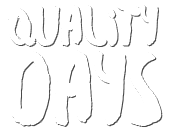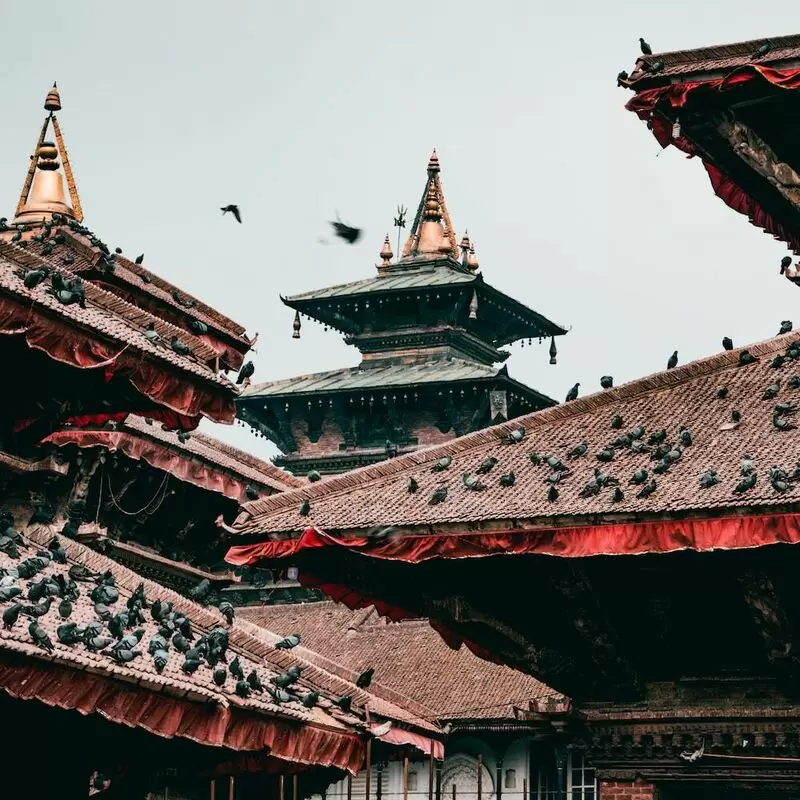
1. Patan Darbar Square
A visit to Patan Darbar Square in Kathmandu is a step back in time and immerses you in the vibrant history and culture of Nepal. The old royal palace, where the Malla kings resided, is a rich mosaic of exquisite Newari architecture. Explore the enchanting maze of courtyards, red brick temples and intricately carved wooden windows. Marvel at the iconic Krishna Mandir and its stone carvings. An insider's tip: Visit the temple at sunset for an unforgettable view. Nearby, stroll through the Patan Museum, a treasure trove of traditional artifacts.
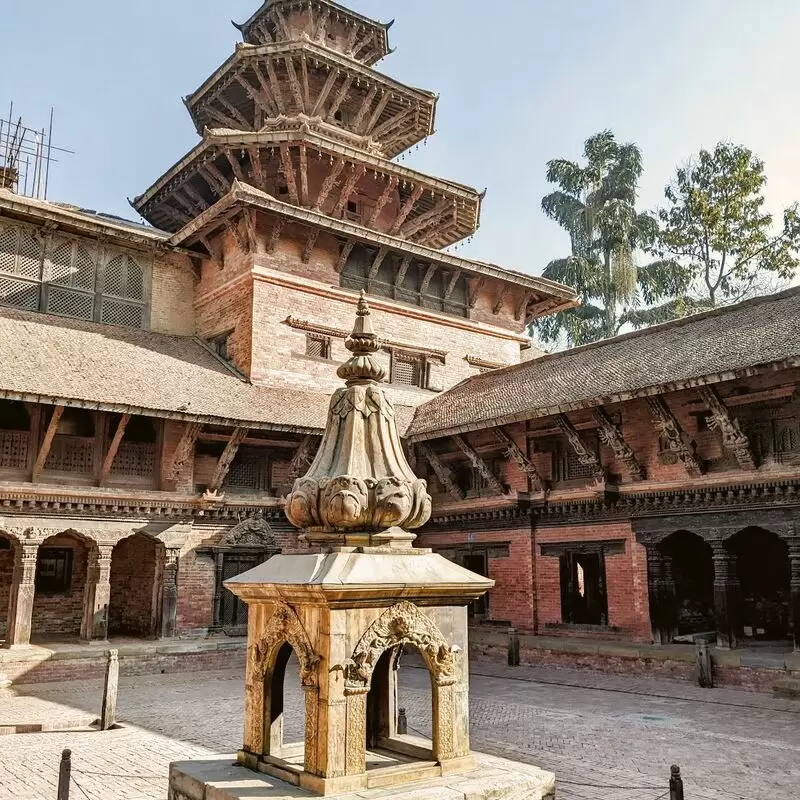 Patan Darbar Square
Patan Darbar Square
Lalitpur
Monday - Sunday: 10:00 AM – 10:00 PM

Lalitpur
2. Kathmandu Durbar Square
A UNESCO World Heritage Site, Kathmandu's Durbar Square exerts an irresistible pull. This atmospheric square is bursting with ancient architecture, rich culture and captivating history. Imagine walking through the same stone courtyards as past Nepalese kings. Don't miss the Kumari Bahal, home of the living goddess Kumari. And whisper your secrets into the ear of the Seto Bhairav statue, which is said to grant wishes. Just a short walk away is the ornate Kasthamandap Temple, said to be built from a single tree!
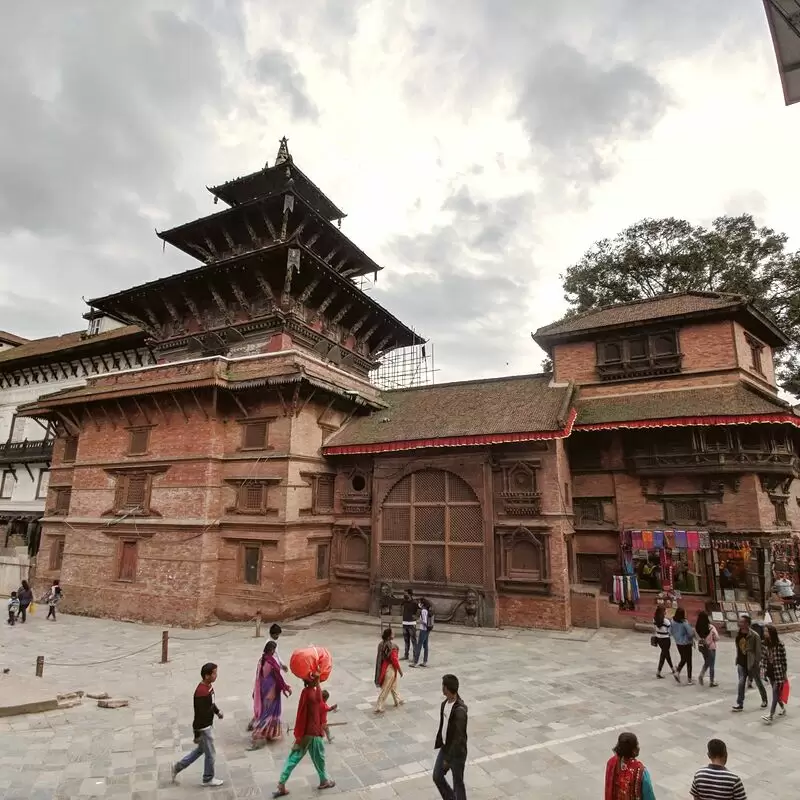 Kathmandu Durbar Square
Kathmandu Durbar Square
Kathmandu

Kathmandu
3. Bhaktapur Durbar Square
Immerse yourself in the rich history of Bhaktapur Durbar Square, a UNESCO World Heritage Site in the heart of Kathmandu. Marvel at the intricate wood carvings and masonry of the 15th century palaces and pagodas. Locals believe you can hear the whispers of the past if you are really quiet. Visit nearby Pottery Square and watch skilled potters shape traditional Nepalese pottery. Visiting this cultural gem is a must on any Nepal trip.
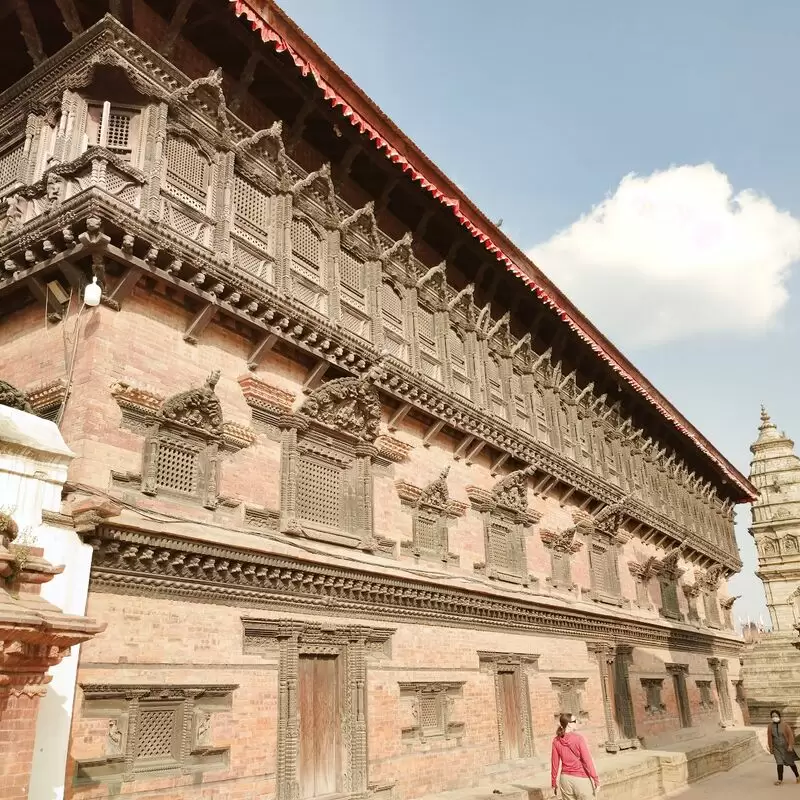 Bhaktapur Durbar Square
Bhaktapur Durbar Square
Durbar square, Bhaktapur
Monday - Sunday: 9:00 AM – 6:00 PM

Durbar square, Bhaktapur
4. Swoyambhu Mahachaitya
Imagine experiencing a vibrant blend of culture, history and spirituality at Swoyambhunath Stupa, also known as the "Monkey Temple". A UNESCO World Heritage Site, this site sits atop a hill and offers breathtaking panoramic views of the Kathmandu Valley. Explore the ancient shrine with its colorful prayer flags, spinning prayer wheels and cheeky monkeys. A hint of burning incense and ceremonial music adds to the fascinating atmosphere. It's also just a short drive from Kathmandu's lively Thamel district, where you can shop and enjoy local cuisine!
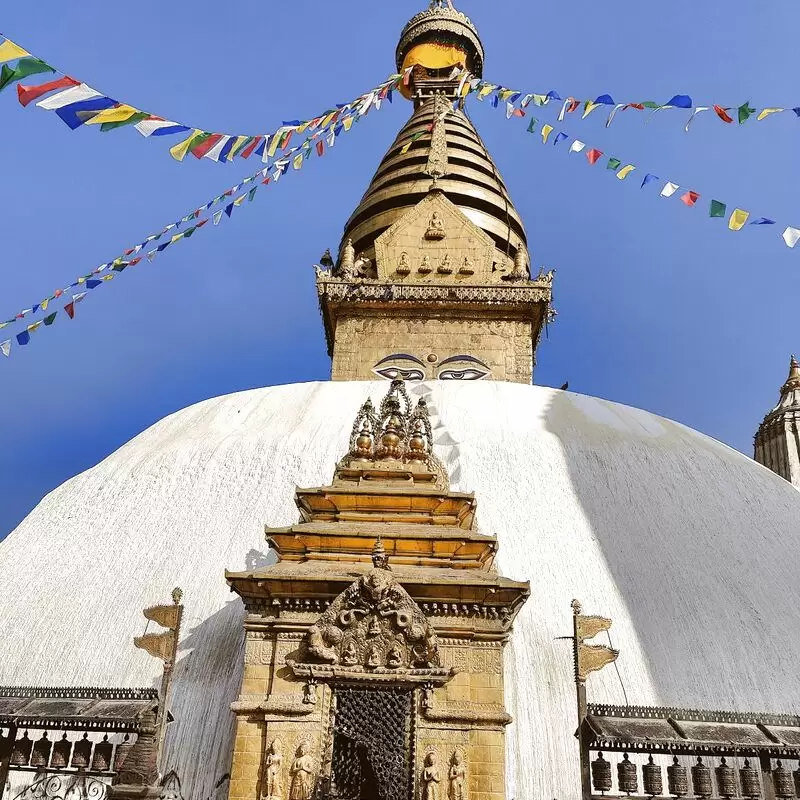 Swoyambhu Mahachaitya
Swoyambhu Mahachaitya
P77R+X52, BHAGANPAU
Monday - Sunday: Open 24 hours

P77R+X52, BHAGANPAU
5. Buddha Stupa
Immerse yourself in the history of the "Buddha Stupa," the largest stupa in Nepal, known for its radiant golden tower topped by a canopy of colorful prayer flags that whisper peace and serenity into the air. Discover the fascinating stories carved into the intricate mandalas. Benefit from the little-known wisdom that spinning the 108 prayer wheels clockwise brings good fortune. Nearby, don't miss the sprawling Pashupatinath Temple, an architectural masterpiece, and a stroll through Thamel, Kathmandu's shopping center. Enlighten your trip with this spiritual feast.
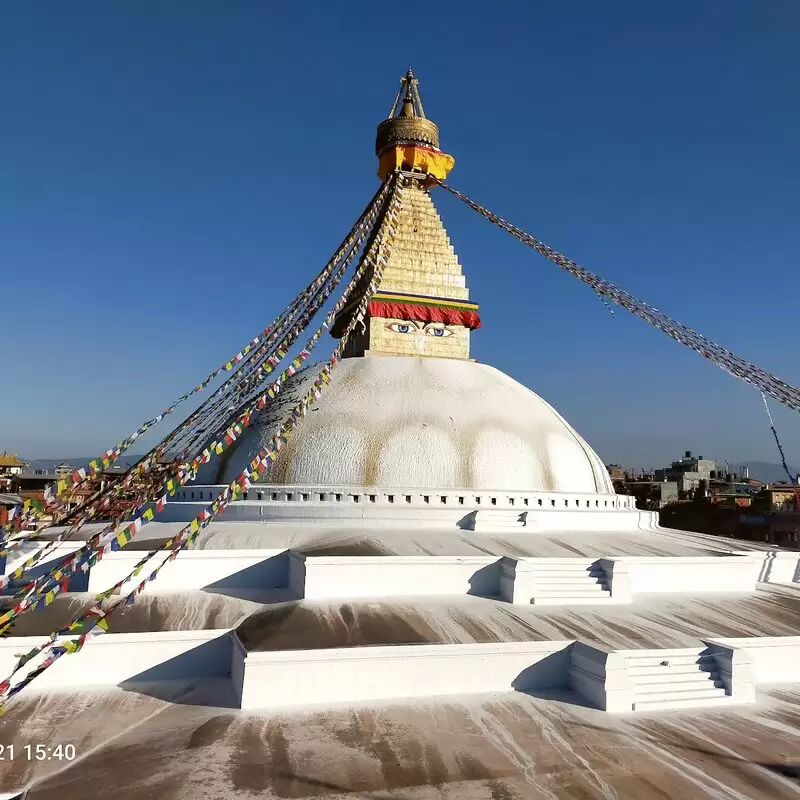 Buddha Stupa
Buddha Stupa
Kathmandu
Monday - Sunday: Open 24 hours

Kathmandu
6. Shivapuri Nagarjun National Park
Discover the untouched beauty of Shivapuri Nagarjun National Park, a paradise for nature lovers. Hike through dense forests and encounter diverse wildlife. Discover Bagdwar Spring, the fabled beginning of the sacred Bagmati River. Enjoy breathtaking panoramic views of the Kathmandu Valley and the Himalayan ranges from the Shivapuri peak. Nearby is the Budhanilkantha Temple, an impressive sculpture of Lord Vishnu that adds a touch of culture to your adventure. Prepare to get pleasantly lost in this natural sanctuary.
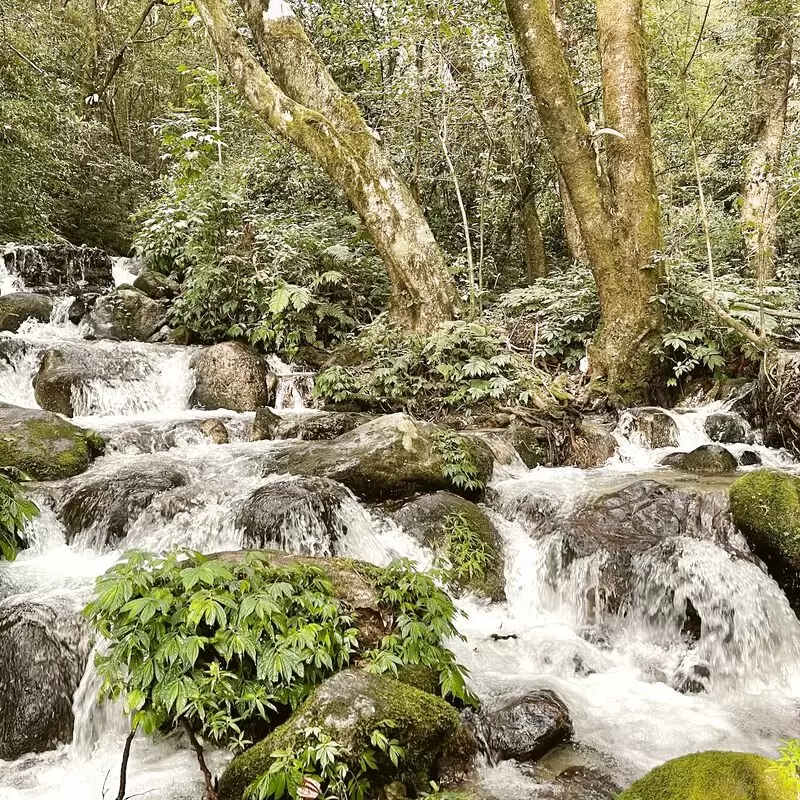 Shivapuri Nagarjun National Park
Shivapuri Nagarjun National Park
44600
Monday - Sunday: 7:00 AM – 5:00 PM

44600
7. Garden of Dreams
Visit the "Garden of Dreams", a serene oasis in the bustling city of Kathmandu. This neoclassical garden is a hidden gem of art, tranquility and extraordinary beauty. Amidst marbled inscriptions, eccentric fountains and stunning flowerbeds, you will be transported to a dreamlike world. Don't miss the secret garden corners, perfect for a lazy afternoon. Nearby, the Narayanhity Palace Museum adds a touch of history to your cultural exploration. Discover the treasures of Kathmandu in one day!
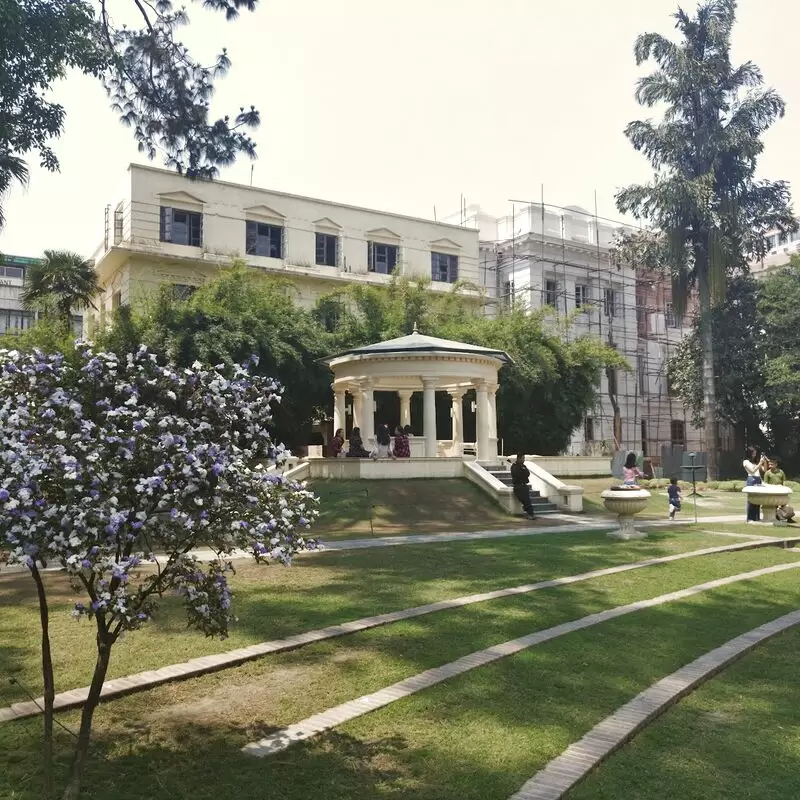 Garden of Dreams
Garden of Dreams
P877+MR2, Tridevi Sadak, Kathmandu
Monday - Sunday: 9:00 AM – 6:30 PM

P877+MR2, Tridevi Sadak, Kathmandu
8. Dakshinkali Temple
Surrounded by lush greenery, the revered Dakshinkali Temple is a remarkable place to experience the cultural and spiritual essence of Kathmandu. Every Tuesday and Saturday, locals come here to offer prayers to the goddess Kali. Witnessing this ceremonial ritual is a unique experience. Nearby, Pharping Monastery imparts the wisdom of Tibetan Buddhism, and the tranquil Chobhar Gorge offers breathtaking views. To round out your visit, sample local Nepalese cuisine at a nearby dhaba. It's more than just a temple, it's an unforgettable cultural immersion!
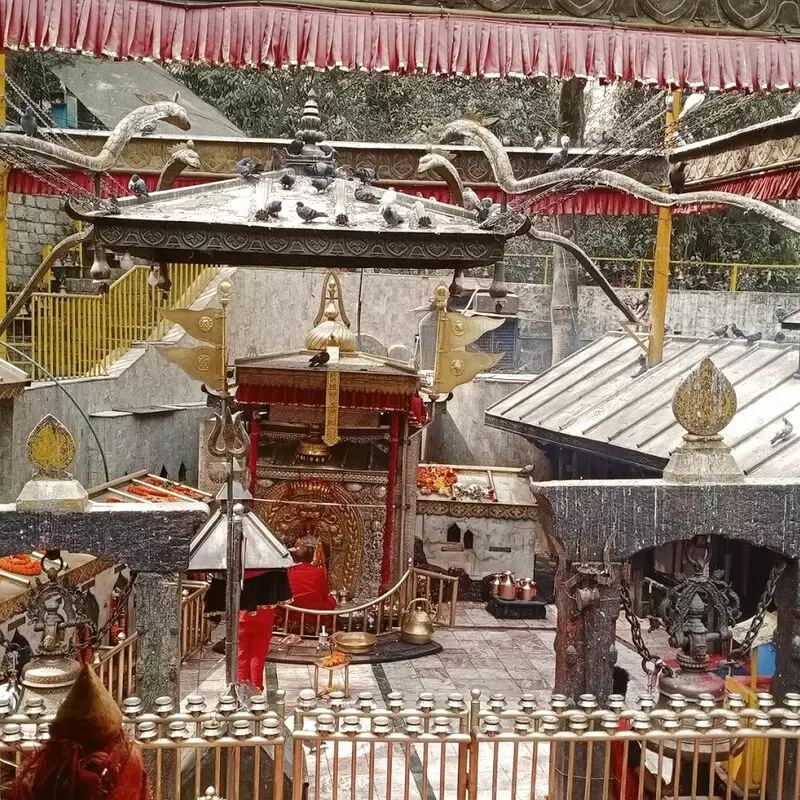 Dakshinkali Temple
Dakshinkali Temple
J747+29X, Pharping-Kulekhani Road, Dakshinkali
Monday - Sunday: Open 24 hours

J747+29X, Pharping-Kulekhani Road, Dakshinkali
9. Kailashnath Mahadev Statue
Visiting the captivating "Kailashnath Mahadev Statue" is truly a unique experience. At 143 feet tall, it is the world's tallest statue of Lord Shiva and offers an intoxicating blend of spirituality, grandeur and Nepalese craftsmanship. From here, you have a breathtaking panoramic view of the surrounding natural beauty. Usually this place is not crowded, which makes it a quiet place. Don't miss the nearby "Bhaktapur Durbar Square", a UNESCO World Heritage Site with its ancient arts and intricate wood carvings, which is just a short drive away.
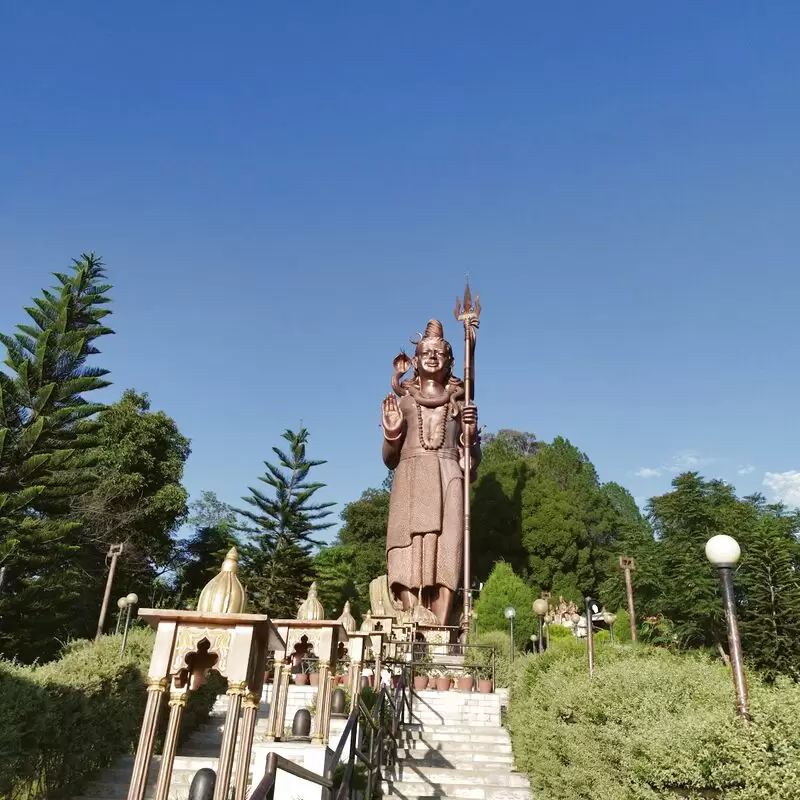 Kailashnath Mahadev Statue
Kailashnath Mahadev Statue
Sanga, Suryabinayak
Monday - Sunday: 7:30 AM – 6:00 PM

Sanga, Suryabinayak
10. Hanuman Dhoka
The Hanuman Dhoka, a World Heritage Site, is a must-see in Kathmandu. The former royal palace impresses with its centuries-old architecture and breathtaking courtyards. It houses fascinating sculptures of deities dating back to the 16th century. Century. Don't miss the idol of Hanuman carved in stone that gives this site its name! Nearby, you can delve deeper into the richness of Nepali culture at Kathmandu Durbar Square. Friday mornings are generally less crowded. Immerse yourself, it's simply incredible!
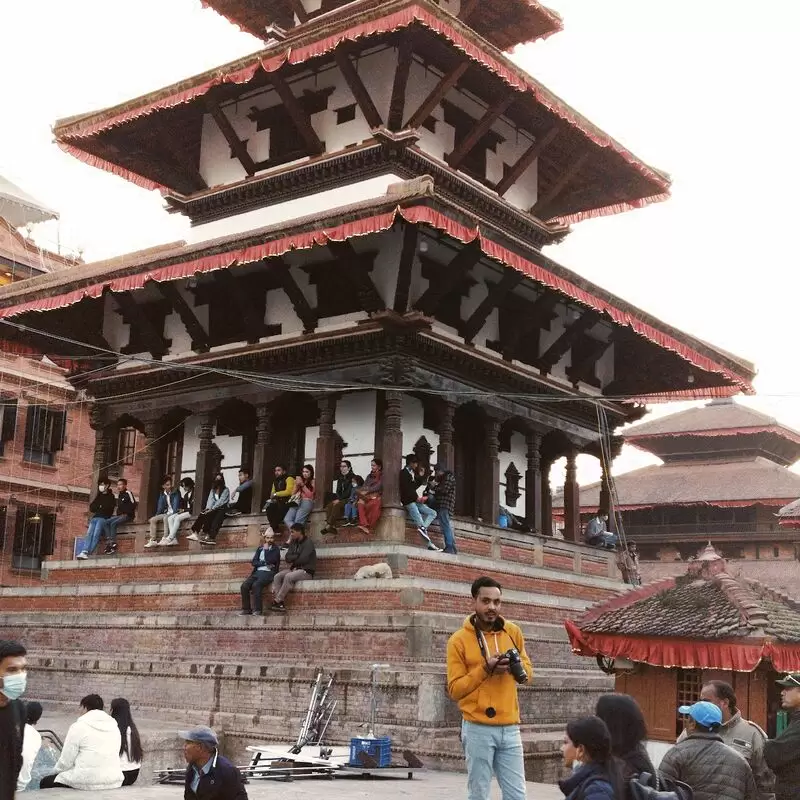 Hanuman Dhoka
Hanuman Dhoka
Hanuman Dhoka Sadak, Kathmandu
Monday - Sunday: 9:00 AM – 5:00 PM

Hanuman Dhoka Sadak, Kathmandu
11. Kopan Monastery
Experience silence at Kopan Monastery, a tranquil retreat in the midst of the bustling city of Kathmandu. Immerse yourself in Tibetan Buddhism, meditate with the monks, and join in soothing chants. From here, you'll have breathtaking views of the city and the Himalayan range. On Sundays, there are special classes on Buddhism that are open to visitors. Remarkably, it's only a short walk to Boudhanath Stupa, another must-visit spiritual hotspot. Don't miss the hidden tea garden where you can sample delicious local teas.
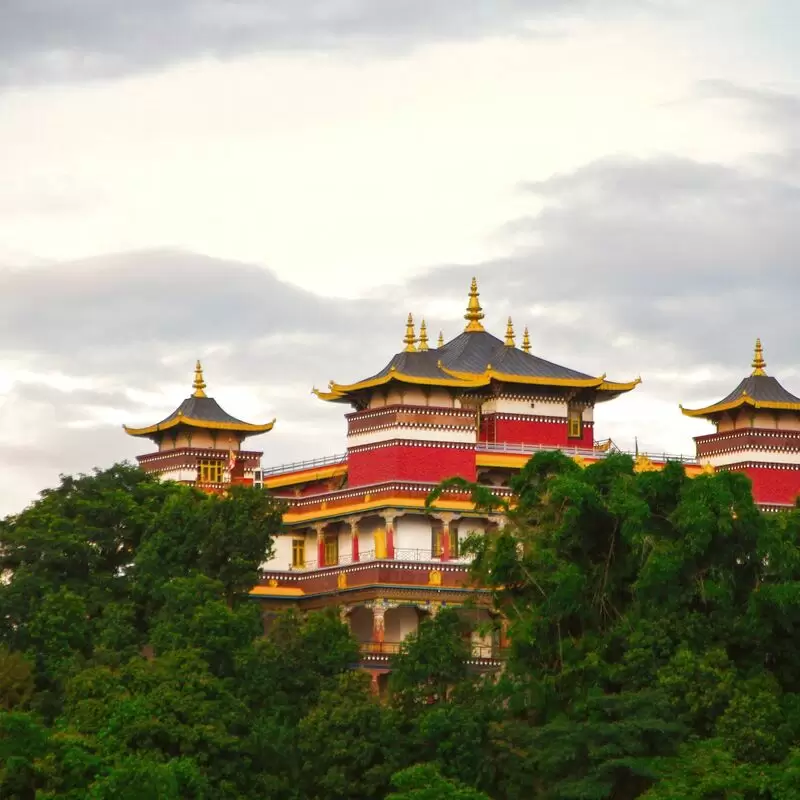 Kopan Monastery
Kopan Monastery
Ward 11, Budhanilkantha
Monday - Sunday: 10:00 AM – 4:00 PM

Ward 11, Budhanilkantha
12. Asan Bazar
A visit to Asan Bazaar in Kathmandu is like a journey to another time. The lively market with its traditional Newari architecture offers fascinating sights and sounds. In the corners you will find local handicrafts, exotic spices, fresh produce and colorful textiles. Be sure to try the tempting local street food! An insider tip: bartering is socially accepted and a lot of fun. Just a short walk away is the famous Kathmandu Durbar Square with its opulent palaces and historic temples.
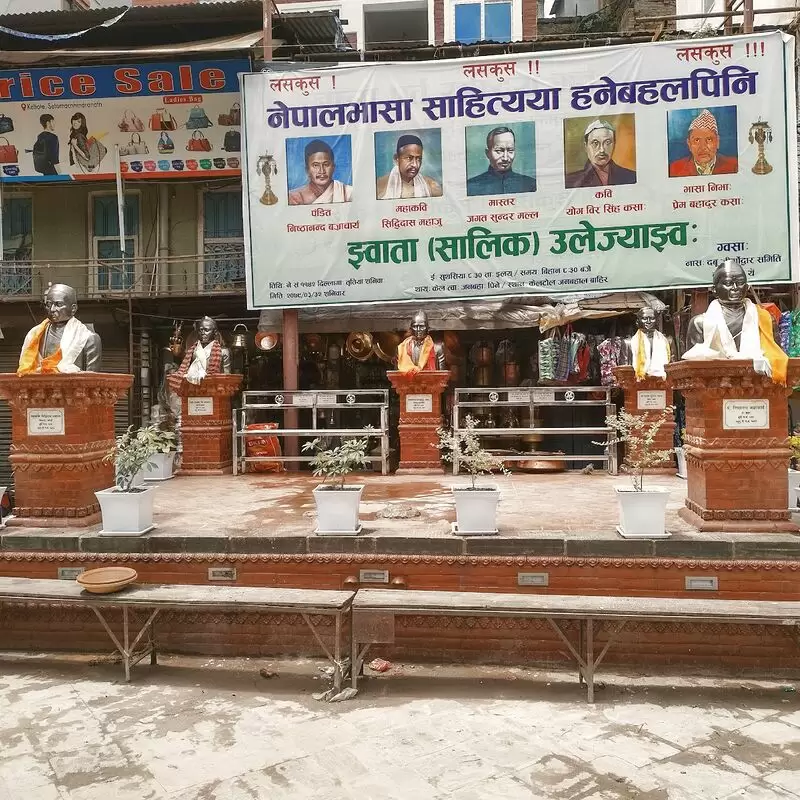 Asan Bazar
Asan Bazar
Chittadhar Marg, Kathmandu
Monday - Sunday: 6:00 AM – 9:00 PM

Chittadhar Marg, Kathmandu
13. Seto Machhindra Nath Temple
For a mystical journey into the heart of Nepali culture, Seto Machhindranath Temple is a must. The deity worshipped as the god of rain is dressed in white here, evoking an awe-inspiring divinity. The festive highlight is the lively annual chariot procession. It is easily accessible from the bustling Asan Market and perfectly combines spirituality with traditional shopping. Nearby, the historic Kathesimbhu Stupa, a smaller replica of the great Swayambhunath Stupa, is not to be missed. Explore the unheard of and feel the spiritual serenity of Kathmandu close by.
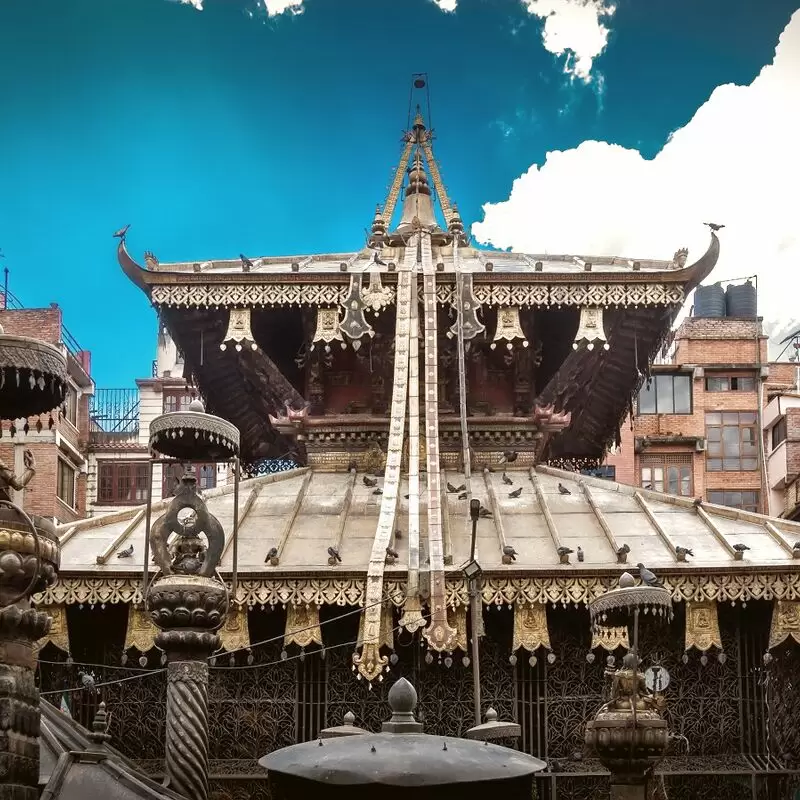 Seto Machhindra Nath Temple
Seto Machhindra Nath Temple
P846+M3H, Siddhidas Marg, Kathmandu
Monday - Sunday: 6:00 AM – 10:00 PM

P846+M3H, Siddhidas Marg, Kathmandu
14. Kathmandu Valley
Explore the vibrant swirl of colors, sounds and spirituality in the Kathmandu Valley. The scent of incense from ancient temples like Swayambhunath and Pashupatinath, which echo centuries-old Buddhist and Hindu traditions, will beguile your senses. Get lost in the labyrinthine alleys teeming with artisans, or sample the tantalizing Nepalese cuisine. Locals prefer the Asan Market for a true Nepali experience - a beautiful jumble of colors and cultures. Nearby, the tranquil beauty of Nagarkot offers breathtaking panoramas of the Himalayas as an inviting extension of your adventure.
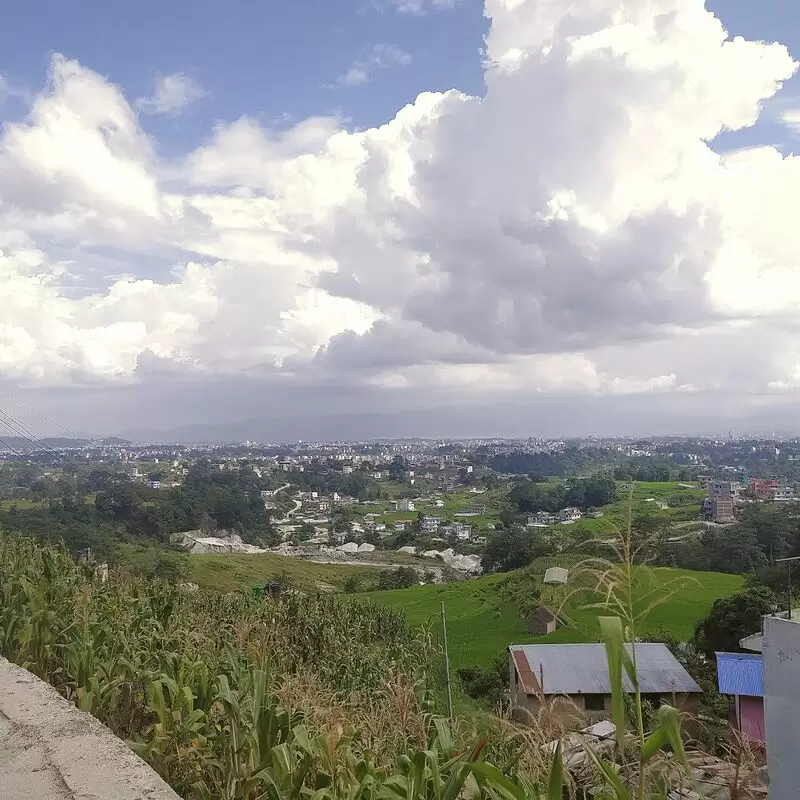 Kathmandu Valley
Kathmandu Valley
Kathmandu Valley, Mahalaxmi

Kathmandu Valley, Mahalaxmi
15. Kasthamandap
The "Kasthamandap", a treasure of Kathmandu, is a must see. This three-story pagoda-style temple, which means "wood-covered shelter," was built from a single sal tree! Not only is it a testament to brilliant Newari craftsmanship, but it is also considered the founding site of Kathmandu. Literally transport yourself back in time and imagine the hustle and bustle of the city's merchants. Just a short walk away, you'll find the bustling old markets of Asan leading up to the majestic Kathmandu Durbar Square. Don't miss it!
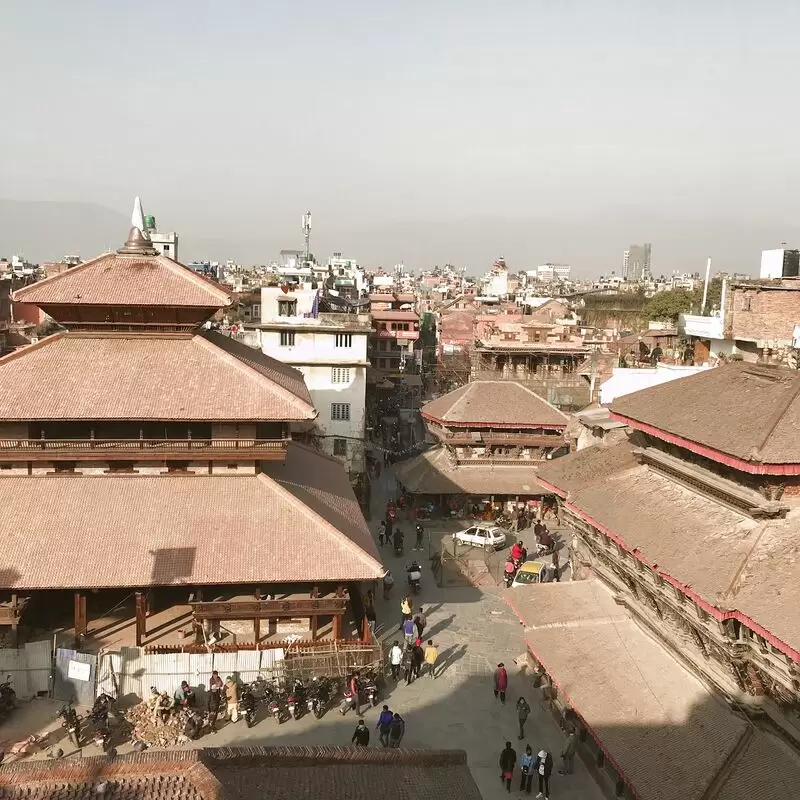 Kasthamandap
Kasthamandap
Kathmandu
Monday - Sunday: Open 24 hours

Kathmandu
Best Time to Visit Kathmandu
The best time to visit Kathmandu, Nepal, is during the autumn months of October and November. The weather is clear with mild temperatures, and it is the perfect time for trekking and sightseeing. Another good time to visit is spring (March to May), when Kathmandu's beauty is highlighted by blooming flowers.
Annual Weather in Kathmandu
January
Jan
42 / 65 °F
5 / 18 °C
0
2
105
February
Feb
45 / 69 °F
7 / 21 °C
1
3
91
March
Mar
51 / 80 °F
11 / 27 °C
1
6
112
April
Apr
57 / 83 °F
14 / 28 °C
2
11
83
May
May
60 / 82 °F
16 / 28 °C
4
20
55
June
Jun
65 / 81 °F
18 / 27 °C
6
23
31
July
Jul
65 / 78 °F
18 / 26 °C
11
30
10
August
Aug
64 / 79 °F
18 / 26 °C
9
29
15
September
Sep
62 / 77 °F
17 / 25 °C
5
23
29
October
Oct
56 / 77 °F
13 / 25 °C
1
9
80
November
Nov
50 / 70 °F
10 / 21 °C
0
1
105
December
Dec
44 / 64 °F
7 / 18 °C
0
0
113
Questions & Answers
What local Nepali dishes should I try?
As a traveler in Kathmandu, Nepal, you must try the national dish Dal Bhat. This tasty and nutritious dish consists of lentil soup, rice, vegetables and pickles. Also be sure to try Momo, local Nepalese dumplings often filled with buffalo meat or vegetables. For dessert, try yomari, a sweet made from rice flour dough filled with molasses and sesame seeds. During lunch or dinner, don't forget to refresh your taste buds with chiya, a delicious Nepalese masala tea.
Is the tap water safe to drink?
As a guide, I recommend that you do not drink tap water in Kathmandu, Nepal. The water may contain harmful bacteria, viruses and contaminants that can cause illness. It is better to rely on bottled or purified water. Boiling tap water before drinking it can kill pathogens, but it cannot remove chemicals or heavy metals. Therefore, it is safer to buy sealed bottled water from a reputable brand or use a portable water purifier.
How can I respect the local culture and customs?
To respect the local culture in Kathmandu, avoid touching people's heads or pointing with your feet as this is considered disrespectful. Remember to always use your right hand or both hands when giving or receiving anything. Dress modestly, especially when visiting religious sites. Avoid showing affection in public and always ask permission before photographing locals or their property. Finally, appreciate the slow pace of life and respect local customs and etiquette.
Where can I exchange my currency?
Money can be exchanged at various places in Kathmandu. Financial institutions such as banks and authorized exchange offices throughout the city, especially in tourist centers such as Thamel and Durbar Square, offer favorable exchange rates. Some hotels and travel agencies also offer this service. Always make sure you get an official receipt for your transaction. There are also ATMs that dispense Nepali rupees. However, the exchange rates there may be lower.
Can I use credit cards in most places?
Yes, credit cards such as Visa and MasterCard are widely accepted in Kathmandu, especially in hotels, restaurants and some larger stores. However, many smaller stores, local stores and vendors usually operate on a cash basis. It is advisable to have some local Nepali rupees on hand for such situations. Please also note that credit card transactions may be subject to a processing fee.
What are the local emergency numbers?
In Kathmandu, Nepal, the local emergency numbers are 100 for the police station and 101 for the fire department. Medical emergencies can be directed to 102. The tourist police can be reached at 1144. In case of a traffic accident, contact 103. For women, children and the elderly, the number to call is 104. Having these numbers at hand during your stay in Kathmandu can prove extremely useful.
Is Kathmandu safe for solo travelers?
Kathmandu is mostly safe for solo travelers. The city is bustling and the locals are generally friendly and hospitable. As with any other place, it is important to be aware of your surroundings. Petty theft and scams can occur, so avoid unpopulated areas at night and be careful when dealing with cab drivers and tour operators. Stay within tourist areas and follow local customs to have a safe and enjoyable trip.
Do I need to tip in restaurants and taxis?
Tipping is not mandatory in Kathmandu, Nepal, but is appreciated. In restaurants, a 10% tip is generally considered a good tip unless a service charge is already included. For cabs, drivers generally do not expect a tip, but you can round up the fare or leave a small amount if you were satisfied with the service. Remember that tipping in Nepal is more about consideration than amount.
How easy is it to get around Kathmandu?
A trip through Kathmandau can be an experience in itself. Traditionally, the city is known for its crowded, chaotic streets, but nowadays cabs and rickshaws are common modes of transportation. Public buses are also available, though signage is not always in English. The adventurous can also rent a bicycle or a motorcycle. Despite the city's complex structure, there are numerous landmarks that can help you find your way around. The city is good to explore on foot, but be prepared for lively crowds.
How good is the internet connectivity?
Internet connection in Kathmandu, Nepal, is quite reliable in most areas, especially in the city center where many establishments and accommodations offer free Wi-Fi. There are also several Internet service providers for home connections. Speeds may not be as fast as in Western countries, with 4G being the highest mobile data speed available. Overall, Internet services should be sufficient for most travelers to easily surf and communicate.
Do locals speak English?
Although the official language in Kathmandu and Nepal is Nepali, many locals speak English, especially those who work in the tourism and hospitality industry. English is also taught in schools as a second language, so the younger generation usually has a basic understanding of English. However, fluency can vary, and not everyone feels comfortable speaking English. It is always beneficial to try to learn a few basic phrases in Nepali.
What are some common Nepali phrases I should know?
If you are traveling to Kathmandu, knowing some Nepali phrases can enrich your trip. A warm greeting is "Namaste", which means "Hello". If you want to express your gratitude, say "Dhanyabad." If you need help, say "Ma sahayog chahanchu," which means "I need help." You can also ask "Kati ho?" for the price and "Tapainko naam ke ho?" for a person's name. If you master these expressions, you will find it easier to interact with the locals and experience more authenticity.
How can I avoid altitude sickness?
To prevent altitude sickness in Kathmandu, gradual acclimatization during the ascent is essential. Make sure you drink enough fluids, eat foods rich in carbohydrates and avoid alcohol and caffeine. Rest well, get enough sleep, and do not overtax your body. It is also advisable to pack medications such as acetazolamide or Diamox, which can help with altitude adjustment. Finally, listen to your body; if symptoms persist, descend immediately.
Is Kathmandu a vegetarian-friendly city?
Yes, Kathmandu is a vegetarian-friendly city. Most restaurants have a wide range of vegetarian options and many offer traditional Nepali vegetarian dishes, such as dal bhat, a lentil soup with rice and vegetables. Due to the large Buddhist and Hindu populations, many of whom are vegetarian, vegetarian dishes are widely accepted and easily accessible. In addition, international dishes aimed at vegetarians are also readily available.
Is it necessary to have a travel insurance?
Travel insurance is not required by law for travel to Kathmandu, Nepal, but is strongly recommended. It provides protection against unexpected events such as trip cancellation, medical emergencies, flight delays, lost luggage, theft, etc. The region is also known for adventure activities such as hiking and trekking, which may pose further risks. In addition, medical care in Nepal may not meet Western standards, and insurance may cover medical evacuation costs if needed.
Where can I find an English speaking doctor?
There are several international hospitals and clinics in Kathmandu where you can find English-speaking doctors. The CIWEC clinic in Lazimpat is an excellent choice as it explicitly caters to international visitors. The Kathmandu Model Hospital is also recommended, as the staff there is multilingual. To find an English-speaking doctor, you should ask for one when making an appointment.
What vaccinations do I need for Nepal?
For a trip to Nepal, it is recommended to get vaccinated against diseases such as hepatitis A, hepatitis B, typhoid, meningitis, Japanese encephalitis and rabies, depending on your personal health status and planned activities. Since Nepal is in the meningitis belt of sub-Saharan Africa, vaccination against meningococcal meningitis should be considered. Also, make sure routine vaccinations such as measles-mumps-rubella (MMR), diphtheria-tetanus-pertussis, varicella (chickenpox), and polio are up to date. A yellow fever vaccination certificate may be required if you are coming from a country where there is a risk of yellow fever.
How can I respect the religious sites?
When visiting religious sites in Kathuandu, dress modestly and cover your shoulders, stomach and knees. Also remember to remove your shoes before entering a temple. Do not touch religious artifacts or statues without permission, as this may be considered disrespectful. Show reverence to the monks and nuns. Walk clockwise around stupas or chortens (Buddhist monuments). In general, observe and follow the behavior of the locals at these sites.
Can I drive with my home country's license?
Yes, it is generally possible to drive in Kathmandu, Nepal with an International Driving Permit (IDP) in conjunction with your home country's driver's license. However, foreign driver's licenses alone are not accepted. To be safe, always carry your IDP and your national driver's license when driving. Be prepared for difficult driving conditions, such as traffic congestion and different road rules. Please check with local authorities for the latest regulations.
How to react during an earthquake condition?
In the event of an earthquake in Kathmandu, safety takes precedence over everything else. Immediately seek shelter under sturdy furniture or against an interior wall, away from windows, bookshelves, or tall furniture that could potentially fall on you. Cover your head and neck to protect yourself. If you are outdoors, move to an open area away from buildings, streetlights and power lines. Once the quake stops, calmly exit the building and avoid the damaged areas. Always follow local advice and instructions.
Are there any local public holidays I should be aware of?
Nepal has several holidays, which are usually based on the lunar calendar, so the dates change annually. The most important holidays include Dashain, the most important Hindu festival celebrating the victory of the gods over the demons, and Tihar, the five-day festival worshipping Lakshmi, the goddess of prosperity. Other holidays include Buddha Jayanti, the birthday of Lord Buddha, and the Nepalese New Year, which celebrates the beginning of the new lunar year. Keep in mind that these holidays may cause closures and the celebrations may affect your travel plans.
How to avoid crowded tourist places?
Kathmandu, while rich in cultural and historical sites, can be overrun with tourists. To avoid the crowds, visit lesser-known areas such as the districts of Patan and Bhaktapur, which are equally charming but less visited. Try to visit the popular sites early in the morning or late in the afternoon when there are fewer tourists. You can also opt for places off the beaten path, such as Godavari Botanical Gardens or Shivapuri National Park, for a peaceful experience.
Do I need to dress in a particular way according to local norms?
Nepal is a culturally rich and religiously diverse country. While there is no strict dress code, travelers are advised to dress modestly, especially when visiting religious sites. Permissive clothing such as short skirts, sleeveless tops and short shorts are generally frowned upon. Due to changing weather conditions, wearing layers is recommended. It is also polite to remove your shoes when entering temples or houses.
How easy is it to retrieve lost items here?
The recovery of lost items in Kathapur depends largely on where the item was misplaced. Public establishments such as restaurants, tour operators, and hotels often have a lost and found office that can be very helpful. However, in general access areas, it can be more difficult to retrieve lost items due to the busy environment. Local police departments may be able to help, but success is not guaranteed. It is best to take extra care to keep personal items safe.
Where can I get Sim card or local phone services?
You can easily buy a SIM card in Kathmandu, Nepal from two major mobile phone providers - Namaste or Ncell. Both have kiosks in Tribhuvan International Airport upon arrival or you can visit their service centers in the city. Just present your passport and fill out a form to get the SIM card directly. You will also find recharge cards all over the city to top up your credit if needed.
How hard is it to do trekking near Kathmandu?
Trekking near Kathmandu can range from moderately easy to challenging, depending on the route and fitness level. Most treks involve some climbing, but also offer plenty of natural beauty, majestic mountain views, lush greenery and a glimpse into the local culture. It is important to be physically prepared, and acclimatization is key to managing the elevation changes. Nevertheless, every step is a unique experience worth the effort.
Is bargaining acceptable in local markets?
Yes, haggling is quite common and even considered part of the shopping experience in local markets in Kathmandu, Nepal. While it is common to shop at fixed prices in malls and larger retail stores, it is acceptable and even expected to negotiate a fair price in small stores and stalls. Always do so in a friendly and respectful manner, and keep in mind that haggling too aggressively may be considered rude. So haggle calmly, but do so with respect for the principles of fair trade.
Are there any specific local laws that I should be aware of?
As a traveler in Kathmandu, Nepal, it is important to respect local customs and laws. Showing affection in public is considered inappropriate. It is illegal to buy or sell antiques or sacred objects without the proper paperwork. The use of drugs is strictly prohibited, as are activities that may harm or disturb wildlife. Spitting and littering in public places may also be punishable. Always seek advice from local authorities when entering temples and houses, and remember to dress modestly.
Is there a significant environmental issue in Kathmandu that I should know about?
One of the major environmental problems in Kathmandu is severe air pollution due to rapid urbanization and increasing vehicle emissions. Brick kilns, open burning of garbage, and dust from unregulated construction projects also contribute to deteriorating air quality. Combined with the city's geographic location, which restricts air circulation, pollutants are retained, causing health problems for residents and affecting the overall tourist experience.
How can I participate in local volunteering during my stay?
Participating in a volunteer service in Kathmandu can be an enriching experience. Many social organizations and non-governmental organizations are looking for volunteers for community work, cultural exchange or teaching initiatives. It is advisable to research in advance, contact these organizations and understand their requirements. Some host families even arrange volunteer placements. However, always remember to respect local customs and traditions when participating in these activities.
Feedback
I hope you found this article informative and helpful. I'm eager to improve the content and make it even more valuable for you. If you have any feedback or suggestions, I would love to hear from you.
Do you have any tips or hidden gems that you think should be added to the list? Are there any areas that you feel could use more explanation or clarification?
Your input is greatly appreciated and will help us to continue providing high-quality content that meets your needs and interests. Please feel free to share your thoughts.
What local Nepali dishes should I try?
As a traveler in Kathmandu, Nepal, you must try the national dish Dal Bhat. This tasty and nutritious dish consists of lentil soup, rice, vegetables and pickles. Also be sure to try Momo, local Nepalese dumplings often filled with buffalo meat or vegetables. For dessert, try yomari, a sweet made from rice flour dough filled with molasses and sesame seeds. During lunch or dinner, don't forget to refresh your taste buds with chiya, a delicious Nepalese masala tea.
Is the tap water safe to drink?
As a guide, I recommend that you do not drink tap water in Kathmandu, Nepal. The water may contain harmful bacteria, viruses and contaminants that can cause illness. It is better to rely on bottled or purified water. Boiling tap water before drinking it can kill pathogens, but it cannot remove chemicals or heavy metals. Therefore, it is safer to buy sealed bottled water from a reputable brand or use a portable water purifier.
How can I respect the local culture and customs?
To respect the local culture in Kathmandu, avoid touching people's heads or pointing with your feet as this is considered disrespectful. Remember to always use your right hand or both hands when giving or receiving anything. Dress modestly, especially when visiting religious sites. Avoid showing affection in public and always ask permission before photographing locals or their property. Finally, appreciate the slow pace of life and respect local customs and etiquette.
Where can I exchange my currency?
Money can be exchanged at various places in Kathmandu. Financial institutions such as banks and authorized exchange offices throughout the city, especially in tourist centers such as Thamel and Durbar Square, offer favorable exchange rates. Some hotels and travel agencies also offer this service. Always make sure you get an official receipt for your transaction. There are also ATMs that dispense Nepali rupees. However, the exchange rates there may be lower.
Can I use credit cards in most places?
Yes, credit cards such as Visa and MasterCard are widely accepted in Kathmandu, especially in hotels, restaurants and some larger stores. However, many smaller stores, local stores and vendors usually operate on a cash basis. It is advisable to have some local Nepali rupees on hand for such situations. Please also note that credit card transactions may be subject to a processing fee.
What are the local emergency numbers?
In Kathmandu, Nepal, the local emergency numbers are 100 for the police station and 101 for the fire department. Medical emergencies can be directed to 102. The tourist police can be reached at 1144. In case of a traffic accident, contact 103. For women, children and the elderly, the number to call is 104. Having these numbers at hand during your stay in Kathmandu can prove extremely useful.
Is Kathmandu safe for solo travelers?
Kathmandu is mostly safe for solo travelers. The city is bustling and the locals are generally friendly and hospitable. As with any other place, it is important to be aware of your surroundings. Petty theft and scams can occur, so avoid unpopulated areas at night and be careful when dealing with cab drivers and tour operators. Stay within tourist areas and follow local customs to have a safe and enjoyable trip.
Do I need to tip in restaurants and taxis?
Tipping is not mandatory in Kathmandu, Nepal, but is appreciated. In restaurants, a 10% tip is generally considered a good tip unless a service charge is already included. For cabs, drivers generally do not expect a tip, but you can round up the fare or leave a small amount if you were satisfied with the service. Remember that tipping in Nepal is more about consideration than amount.
How easy is it to get around Kathmandu?
A trip through Kathmandau can be an experience in itself. Traditionally, the city is known for its crowded, chaotic streets, but nowadays cabs and rickshaws are common modes of transportation. Public buses are also available, though signage is not always in English. The adventurous can also rent a bicycle or a motorcycle. Despite the city's complex structure, there are numerous landmarks that can help you find your way around. The city is good to explore on foot, but be prepared for lively crowds.
How good is the internet connectivity?
Internet connection in Kathmandu, Nepal, is quite reliable in most areas, especially in the city center where many establishments and accommodations offer free Wi-Fi. There are also several Internet service providers for home connections. Speeds may not be as fast as in Western countries, with 4G being the highest mobile data speed available. Overall, Internet services should be sufficient for most travelers to easily surf and communicate.
Do locals speak English?
Although the official language in Kathmandu and Nepal is Nepali, many locals speak English, especially those who work in the tourism and hospitality industry. English is also taught in schools as a second language, so the younger generation usually has a basic understanding of English. However, fluency can vary, and not everyone feels comfortable speaking English. It is always beneficial to try to learn a few basic phrases in Nepali.
What are some common Nepali phrases I should know?
If you are traveling to Kathmandu, knowing some Nepali phrases can enrich your trip. A warm greeting is "Namaste", which means "Hello". If you want to express your gratitude, say "Dhanyabad." If you need help, say "Ma sahayog chahanchu," which means "I need help." You can also ask "Kati ho?" for the price and "Tapainko naam ke ho?" for a person's name. If you master these expressions, you will find it easier to interact with the locals and experience more authenticity.
How can I avoid altitude sickness?
To prevent altitude sickness in Kathmandu, gradual acclimatization during the ascent is essential. Make sure you drink enough fluids, eat foods rich in carbohydrates and avoid alcohol and caffeine. Rest well, get enough sleep, and do not overtax your body. It is also advisable to pack medications such as acetazolamide or Diamox, which can help with altitude adjustment. Finally, listen to your body; if symptoms persist, descend immediately.
Is Kathmandu a vegetarian-friendly city?
Yes, Kathmandu is a vegetarian-friendly city. Most restaurants have a wide range of vegetarian options and many offer traditional Nepali vegetarian dishes, such as dal bhat, a lentil soup with rice and vegetables. Due to the large Buddhist and Hindu populations, many of whom are vegetarian, vegetarian dishes are widely accepted and easily accessible. In addition, international dishes aimed at vegetarians are also readily available.
Is it necessary to have a travel insurance?
Travel insurance is not required by law for travel to Kathmandu, Nepal, but is strongly recommended. It provides protection against unexpected events such as trip cancellation, medical emergencies, flight delays, lost luggage, theft, etc. The region is also known for adventure activities such as hiking and trekking, which may pose further risks. In addition, medical care in Nepal may not meet Western standards, and insurance may cover medical evacuation costs if needed.
Where can I find an English speaking doctor?
There are several international hospitals and clinics in Kathmandu where you can find English-speaking doctors. The CIWEC clinic in Lazimpat is an excellent choice as it explicitly caters to international visitors. The Kathmandu Model Hospital is also recommended, as the staff there is multilingual. To find an English-speaking doctor, you should ask for one when making an appointment.
What vaccinations do I need for Nepal?
For a trip to Nepal, it is recommended to get vaccinated against diseases such as hepatitis A, hepatitis B, typhoid, meningitis, Japanese encephalitis and rabies, depending on your personal health status and planned activities. Since Nepal is in the meningitis belt of sub-Saharan Africa, vaccination against meningococcal meningitis should be considered. Also, make sure routine vaccinations such as measles-mumps-rubella (MMR), diphtheria-tetanus-pertussis, varicella (chickenpox), and polio are up to date. A yellow fever vaccination certificate may be required if you are coming from a country where there is a risk of yellow fever.
How can I respect the religious sites?
When visiting religious sites in Kathuandu, dress modestly and cover your shoulders, stomach and knees. Also remember to remove your shoes before entering a temple. Do not touch religious artifacts or statues without permission, as this may be considered disrespectful. Show reverence to the monks and nuns. Walk clockwise around stupas or chortens (Buddhist monuments). In general, observe and follow the behavior of the locals at these sites.
Can I drive with my home country's license?
Yes, it is generally possible to drive in Kathmandu, Nepal with an International Driving Permit (IDP) in conjunction with your home country's driver's license. However, foreign driver's licenses alone are not accepted. To be safe, always carry your IDP and your national driver's license when driving. Be prepared for difficult driving conditions, such as traffic congestion and different road rules. Please check with local authorities for the latest regulations.
How to react during an earthquake condition?
In the event of an earthquake in Kathmandu, safety takes precedence over everything else. Immediately seek shelter under sturdy furniture or against an interior wall, away from windows, bookshelves, or tall furniture that could potentially fall on you. Cover your head and neck to protect yourself. If you are outdoors, move to an open area away from buildings, streetlights and power lines. Once the quake stops, calmly exit the building and avoid the damaged areas. Always follow local advice and instructions.
Are there any local public holidays I should be aware of?
Nepal has several holidays, which are usually based on the lunar calendar, so the dates change annually. The most important holidays include Dashain, the most important Hindu festival celebrating the victory of the gods over the demons, and Tihar, the five-day festival worshipping Lakshmi, the goddess of prosperity. Other holidays include Buddha Jayanti, the birthday of Lord Buddha, and the Nepalese New Year, which celebrates the beginning of the new lunar year. Keep in mind that these holidays may cause closures and the celebrations may affect your travel plans.
How to avoid crowded tourist places?
Kathmandu, while rich in cultural and historical sites, can be overrun with tourists. To avoid the crowds, visit lesser-known areas such as the districts of Patan and Bhaktapur, which are equally charming but less visited. Try to visit the popular sites early in the morning or late in the afternoon when there are fewer tourists. You can also opt for places off the beaten path, such as Godavari Botanical Gardens or Shivapuri National Park, for a peaceful experience.
Do I need to dress in a particular way according to local norms?
Nepal is a culturally rich and religiously diverse country. While there is no strict dress code, travelers are advised to dress modestly, especially when visiting religious sites. Permissive clothing such as short skirts, sleeveless tops and short shorts are generally frowned upon. Due to changing weather conditions, wearing layers is recommended. It is also polite to remove your shoes when entering temples or houses.
How easy is it to retrieve lost items here?
The recovery of lost items in Kathapur depends largely on where the item was misplaced. Public establishments such as restaurants, tour operators, and hotels often have a lost and found office that can be very helpful. However, in general access areas, it can be more difficult to retrieve lost items due to the busy environment. Local police departments may be able to help, but success is not guaranteed. It is best to take extra care to keep personal items safe.
Where can I get Sim card or local phone services?
You can easily buy a SIM card in Kathmandu, Nepal from two major mobile phone providers - Namaste or Ncell. Both have kiosks in Tribhuvan International Airport upon arrival or you can visit their service centers in the city. Just present your passport and fill out a form to get the SIM card directly. You will also find recharge cards all over the city to top up your credit if needed.
How hard is it to do trekking near Kathmandu?
Trekking near Kathmandu can range from moderately easy to challenging, depending on the route and fitness level. Most treks involve some climbing, but also offer plenty of natural beauty, majestic mountain views, lush greenery and a glimpse into the local culture. It is important to be physically prepared, and acclimatization is key to managing the elevation changes. Nevertheless, every step is a unique experience worth the effort.
Is bargaining acceptable in local markets?
Yes, haggling is quite common and even considered part of the shopping experience in local markets in Kathmandu, Nepal. While it is common to shop at fixed prices in malls and larger retail stores, it is acceptable and even expected to negotiate a fair price in small stores and stalls. Always do so in a friendly and respectful manner, and keep in mind that haggling too aggressively may be considered rude. So haggle calmly, but do so with respect for the principles of fair trade.
Are there any specific local laws that I should be aware of?
As a traveler in Kathmandu, Nepal, it is important to respect local customs and laws. Showing affection in public is considered inappropriate. It is illegal to buy or sell antiques or sacred objects without the proper paperwork. The use of drugs is strictly prohibited, as are activities that may harm or disturb wildlife. Spitting and littering in public places may also be punishable. Always seek advice from local authorities when entering temples and houses, and remember to dress modestly.
Is there a significant environmental issue in Kathmandu that I should know about?
One of the major environmental problems in Kathmandu is severe air pollution due to rapid urbanization and increasing vehicle emissions. Brick kilns, open burning of garbage, and dust from unregulated construction projects also contribute to deteriorating air quality. Combined with the city's geographic location, which restricts air circulation, pollutants are retained, causing health problems for residents and affecting the overall tourist experience.
How can I participate in local volunteering during my stay?
Participating in a volunteer service in Kathmandu can be an enriching experience. Many social organizations and non-governmental organizations are looking for volunteers for community work, cultural exchange or teaching initiatives. It is advisable to research in advance, contact these organizations and understand their requirements. Some host families even arrange volunteer placements. However, always remember to respect local customs and traditions when participating in these activities.
Feedback
I hope you found this article informative and helpful. I'm eager to improve the content and make it even more valuable for you. If you have any feedback or suggestions, I would love to hear from you.
Do you have any tips or hidden gems that you think should be added to the list? Are there any areas that you feel could use more explanation or clarification?
Your input is greatly appreciated and will help us to continue providing high-quality content that meets your needs and interests. Please feel free to share your thoughts.
I hope you found this article informative and helpful. I'm eager to improve the content and make it even more valuable for you. If you have any feedback or suggestions, I would love to hear from you.
Do you have any tips or hidden gems that you think should be added to the list? Are there any areas that you feel could use more explanation or clarification?
Your input is greatly appreciated and will help us to continue providing high-quality content that meets your needs and interests. Please feel free to share your thoughts.
